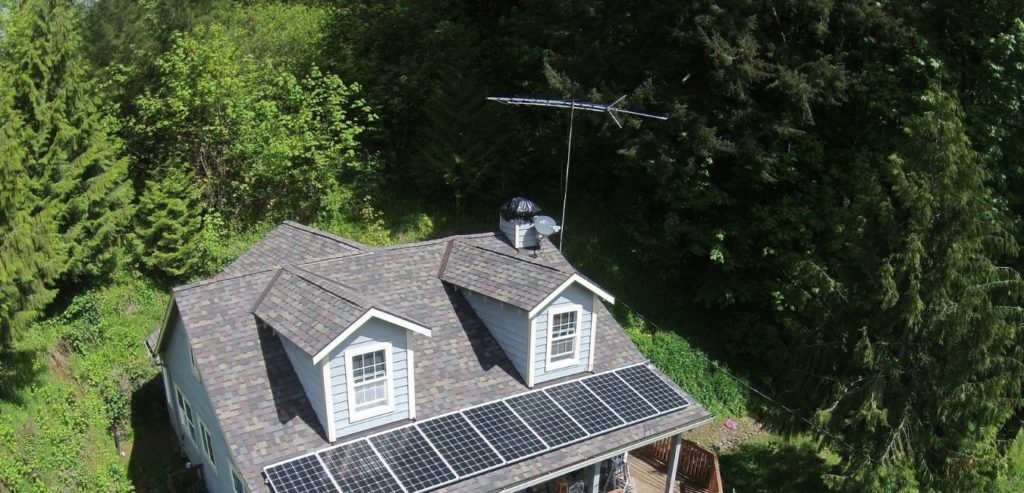Investment Tax Credit (ITC) for Solar
The solar investment tax credit (ITC) is an incentive offered by the federal government that helps reduce the cost of installing residential or commercial solar energy systems. In this article, we’ll cover how it works and what the eligibility requirements are, plus answer a few frequently asked questions.
How Does The Federal Solar Tax Credit Work?
Good news for this incentive. The Inflation Reduction Act of 2022 extends the 30% federal tax credit until 2032, decreasing to 26% in 2033, and dropping to 22% in 2034 before finally disappearing entirely in 2035 unless there is an action taken again by Congress to extend it. This new law supersedes the previous one that would expire this incentive in 2024.
| Year | Residential | Commercial |
|---|---|---|
| Now - 2032 | 30% | 30% |
| Year 2033 | 26% | 26% |
| Year 2034 | 22% | 22% |
| Year 2035 | 0% (Expires) | 0% (Expires) |
How Does The ITC Work?
The Investment Tax Credit (ITC) works by giving a 30% of the total cost back to you in the form of federal tax credits. For example, if your system costs $20,000, you will earn $6,000 back in tax credits.
What happens if I have more tax credits than tax liability?
That’s no problem. You will not get a cash refund, instead, the remaining credits will be applied to the next tax year.
No Maximum Limit
There is no maximum dollar amount for the deduction, meaning that no matter the size and cost of the solar energy system, 30% of the total cost can be deducted from the owner’s federal income taxes so long as the system is installed before the end of 2032.
Eligible expenses include the cost of the solar panels, balance-of-system components (items like mounting equipment, wiring, inverters, etc.), solar contractor costs, permit and inspection fees, energy storage devices, and sales tax that was paid on any of the above costs.
Eligibility For The Solar ITC
There are a few eligibility qualifications for the Federal Solar ITC. The solar energy system must be newly installed and you must own it outright. You cannot claim the ITC for a system that you are leasing or if you are in a power purchase agreement for energy that’s generated by a system that you don’t actually own yourself.
The system must also be located within the United States. For homeowners, it must be installed at your primary or secondary home, and for business owners, it must be installed on-site on your commercial property. Installation must be completed before the tax credit program expires, and the amount of the deduction will depend on the year in which the project is finished, as outlined above.
To claim the credit, you will simply indicate your purchase of a solar energy system when you file your federal income taxes for the year by completing and attaching IRS Form 5695. Consult your tax professional to ensure that you are eligible for the credit and that you’ve correctly filled out the form. If the credit amount exceeds your federal tax liability amount, you can rollover the unused credit to subsequent years, so long as the incentive program is still active. However, it is a nonrefundable credit, so you will not receive a tax refund for any remaining credit amount.
Yes, you can. If you own a condo or if you are a tenant-stockholder of co-op housing and you contribute to the cost of an eligible system that generates energy for the entire residence, you can claim the tax credit on the amount that you contributed. So for instance, if the total cost of the system was $20,000 and you contributed $5,000, you could deduct 26% of that $5,000 from your federal tax liability.
Yes, you can claim the residential IRC as long as the home is for personal use only. Or, if you rent out the vacation home, you may be able to claim the commercial ITC credit as a part of your business.
You can still claim the credit, as long as the panels are located on your property and the energy they generate is used in your home. There is no stipulation that panels must be mounted on the home - ground-mounted systems are also eligible.
Yes, since you are contractually obligated by the finance agreement to pay the full cost of the system over subsequent years. However, expenses that arise as part of the financing (such as interest, extended warranty costs, origination expenses, etc.) are not considered eligible expenses when you are totaling the cost of the installation to calculate your credit.
Other Solar Incentives
Depending on where you live, you may be eligible for other incentives that can be used in combination with the federal tax incentive. Many states offer their own set of incentives, and some cities, municipalities, and even utility companies have offers as well. These incentives can include things like sales tax exemptions, cash rebates, property tax increase exemptions, payment for the sale of renewable energy certificates, and savings from programs like net metering.
A Tax Deduction Only Reduces Your Taxable Income
A tax deduction is nice, but a tax credit is a far better financial opportunity. Here’s why:
This has a complex effect on your tax return, and deciding on the cash value of a standard tax deduction can be challenging. You must know your effective tax rate to make the calculation —or have a good estimate of it. It is a good idea to speak to an accountant about the process and have them create an estimate for you.
For Example
Imagine that you run a business and purchase $9,000 in equipment. This $9,000 becomes a tax deduction and at the end of the year, you can reduce your taxable income by $9,000, saving you a little bit of money.
How much? That depends on your tax rate.
For this example, assume that you have an effective tax rate of around 25%. When you reduce your taxable income by $9,000, the actual cash value of that deduction is only $2,250.

A Solar Tax Credit Is Different
A solar tax credit is a completely different situation. A solar tax credit will directly credit your tax account, wiping out any tax liability that you have on a one-to-one basis. This means that a renewable energy tax credit is exactly like cash—as long as you have enough tax liability to use it.
If you do not have enough tax liability in the first year, then most tax credits will pass forward to the following year. In the case of the Federal Renewable Energy Tax Credit, you can pass this credit forward for up to 20 years.
A Solar Tax Credit Acts Just Like Cash
For example, assume you install a brand new solar energy system with a small down payment, financing the rest.
If the solar array cost you $10,000 total, you would immediately receive a federal tax credit worth 30% of this cost.
This means you could immediately remove $3,000 in tax charges from your tax return. If you usually receive a refund, this would immediately increase your refund by $3,000
How The Federal Solar Tax Credit Is Calculated?
You do not need to know your effective tax rate for a solar tax credit because a solar tax credit acts like cash.
Total Cost of Solar Installation (ballpark example):
$10,000
Immediate Federal Tax Credit
$10,000 x 0.30% = $3,000
This $3,000 is immediately available to you in the tax year that you install the solar array. If you cannot use all of it in the first year, it simply passes forward until you can, for up to 20 years.
How Do I Claim My Federal Solar Tax Incentive?
There is plenty of information about the value of the federal solar tax credit, but when tax season is upon us figuring out how to actually claim the tax credit is another story. We’ll walk you through it.
Determine if you are eligible for the federal ITC and make sure that the federal tax liability is in order.
Complete IRS Form 5965 to validate your qualifications for solar energy credits.
Add your solar energy credit information to your typical Form 1040.
What Documents Might I Need?
When filing your federal taxes you will need to fill a few documents You will need:
Form 5695 – Residential Energy Credit Form
Instructional IRS Guide to Form 5695 – Step-by-step guide
Form 1040 – Line 53 will ask for “Residential energy tax credits…#
Signed final contract or invoice
ITC Top Questions
This federal incentive will step down to 26 percent in 2020 and 22 percent in 2021. After 2021, the residential credit will drop to zero while the commercial and utility credit will drop to a permanent 10 percent. (Source: Dept of Energy)
Filing for this federal solar tax credit is very easy, also. There is a single, one-page form required, plus your receipt from a reputable, licensed solar installer like Sunbridge.
The IRS has not been very clear on this point to the date when it comes to the Residential Renewable Energy Tax Credit. However, for businesses have directly stated that any remaining credit can be passed forward for a full 20 years.
No. This is the only incentive we are not allowed to file on your behalf. We are not certified tax accountants and can't give any legal advice. But don't worry, it's simple to fill out! You may find additional support here.
If you are already receiving a refund at the end of the year, this tax credit will usually make that refund much larger since it eliminates your tax liability on a dollar-for-dollar basis.
Ready To Go Solar?
Contact us today at Sunbridge Solar to get started with your solar energy project! Our team of solar experts will be more than happy to answer any questions you have about the Federal Solar ITC and the solar energy system installation process. We offer free consultations and project quotes to help you determine if solar energy is right for your home or business.


